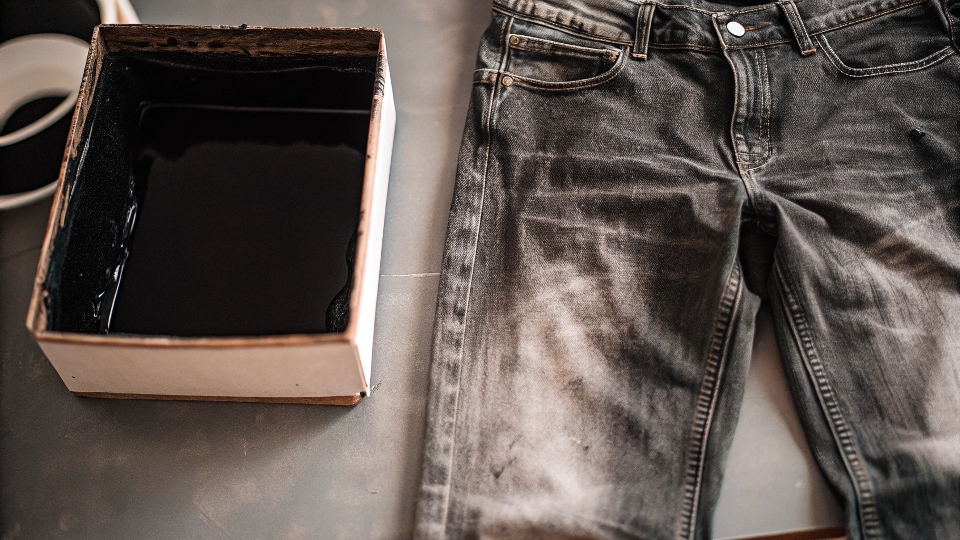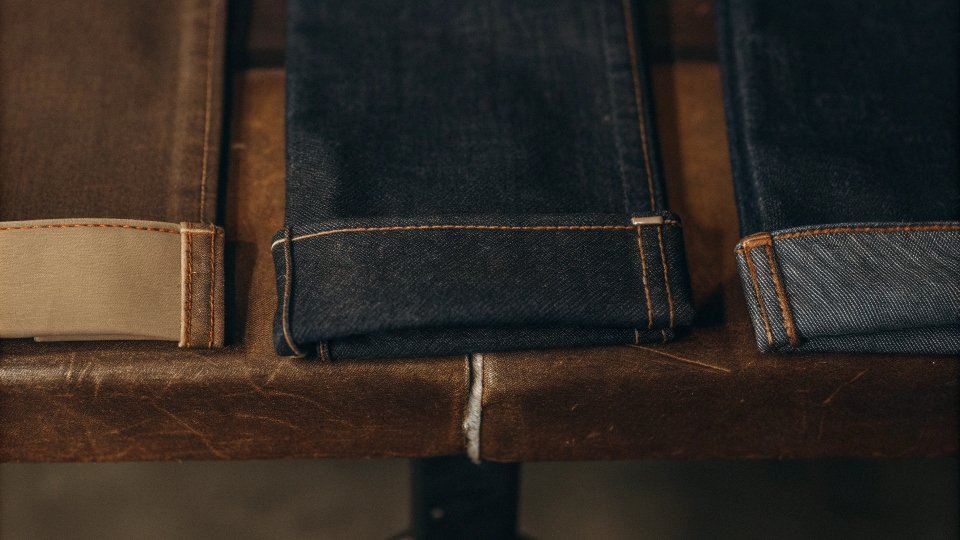Your favorite jeans are starting to look tired and faded. Buying a brand new pair is expensive, but you don't want to give up on that perfect fit.
Yes, you can make your jeans darker, and it's surprisingly easy. Using a commercial fabric dye1 is the most effective method and is much cheaper than buying a new pair of jeans.
In my 20 years of running a denim factory, I've worked with countless dyes. We use huge, industrial machines to get the deep, even colors our clients want.
But the basic science is something you can easily replicate in your own home.
Restoring the color to faded denim is one of the best ways to extend the life of a garment you already love. It’s a simple process that can save you a lot of money.
How can I darken my jeans?
Your favorite jeans are washed out and lifeless. You don't want to throw them away. How can you bring that deep, dark color back to them?
The most effective way to darken jeans is with a commercial fiber-reactive dye2. For a milder effect, you can use natural ingredients3 like coffee. A vinegar soak4 can also help lock in existing color.
Giving jeans a dark, uniform color is something we do every day at my factory. We have precise formulas to get the exact shade a designer wants.
While you don't need industrial equipment, you can choose a method at home based on how dramatic a change you want.
Commercial Dye: The Strongest Method
This is your best option for a real, lasting color change.
Brands like Rit or Dylon make dyes that are designed to chemically bond with cotton fibers, which is what denim is made of.
This creates a permanent new color that won't wash out easily. It's perfect for taking a pair of light blue jeans to a deep indigo or even black.
Just follow the instructions on the package carefully.
Natural Dyes: A Milder Approach
If you just want to add a little bit of depth to faded black or dark blue jeans, natural ingredients3 can work. Using strong black coffee or tea acts as a stain.
It will add a subtle, brownish or grayish tint to the fabric. This method is not permanent and will fade over a few washes, but it's a great chemical-free option for a temporary boost.
Vinegar and Salt: A Color-Lock Trick
This method doesn't add new color. Instead, it helps set the dye that is already in the fabric to prevent future fading.
We use special fixing agents in our final rinse process at the factory to do the same thing.
Soaking your jeans in a cold water bath with vinegar and salt before you wash them can help your dark jeans stay dark for longer.
Is it cheaper to dye jeans or buy new ones?
Your jeans are faded, and you need a pair that looks new. A new pair can be expensive, but you wonder if dyeing them at home is really worth the savings.
It is significantly cheaper to dye your jeans. A dye kit5 will cost you about $5 to $15, while a new pair of quality jeans can easily cost $50, $100, or even more.
In my business, I'm always looking at the cost of materials and labor. The most expensive parts of a pair of jeans are the denim fabric itself and the work it takes to cut and sew them.
The dye is a relatively small fraction of the total cost. When your jeans fade, the construction is usually still in perfect shape.
You've already paid for the fabric and the labor. By dyeing them, you're just paying a few dollars to refresh the color instead of buying a whole new product.
It is one of the smartest ways to get more value out of your clothes. You save money and you keep a perfectly good pair of jeans out of the landfill.
How much does it cost to dye jeans6?
You're ready to try dyeing your jeans. But you're worried about hidden costs for special tools or supplies. What is the real price tag for a project like this?
The cost to dye your jeans is very low, usually between $5 and $15 for a commercial dye kit5. If you use household ingredients like coffee or vinegar, the cost is even less.
The great thing about this project is that you probably already have most of what you need. A bucket, a sink, or a washing machine is all you need for the process.
The only special item you have to buy is the dye itself. I've broken down the typical costs for you below.
| Dyeing Method | Average Cost | Key Supplies You Need |
|---|---|---|
| Commercial Dye Kit | $5–$15 | The dye, salt, and maybe a fixative |
| Natural (Coffee/Tea) | $2–$5 | Coffee grounds or black tea bags |
| Vinegar + Salt | $1–$3 | White vinegar and regular table salt |
As you can see, this is one of the most budget-friendly clothing updates you can do.
For less than the price of lunch, you can completely transform an old pair of jeans. It’s a fantastic return on your small investment.
What GSM is good for jeans?
You hear terms like "denim weight" or "GSM" when shopping for jeans, but you're not sure what they mean. You want jeans that are durable but also comfortable.
A good GSM for most jeans is between 305 and 395, which is about 10 to 13 ounces. This medium weight provides the best balance of durability for daily wear and comfort.
GSM stands for Grams per Square Meter. It's simply a measurement of how heavy and thick the denim fabric is. At my factory, we work with denim of all different weights depending on what the designer wants.
The GSM directly affects how the jeans feel, how they drape, and how long they last.
Lightweight Denim (245–305 GSM / 8–10 oz)
This denim is light, soft, and breathable. It's perfect for summer jeans, jeggings, or more fashion-forward, drapey styles.
It is very comfortable right away, but it will be less durable than heavier options.
Mediumweight Denim (305–395 GSM / 10–13 oz)
This is the sweet spot and the industry standard for a reason. About 80% of the jeans we produce use this weight.
It's strong enough to last for years but not so heavy that it feels stiff or uncomfortable. It’s perfect for classic styles like straight-leg and slim-fit jeans that you can wear all year.
Heavyweight Denim (395+ GSM / 13+ oz)
This is thick, rigid, and incredibly durable fabric. It's often used for traditional workwear or for raw denim that is meant to be broken in over time.
It can feel very stiff at first but will soften and mold to your body with wear, creating a unique, personalized fit.
Conclusion
Dyeing your jeans is a cheap and effective way to make them darker. For the best balance of comfort and durability in any pair, look for a mediumweight denim7.
-
Explore this link to find top-rated commercial fabric dyes that can effectively restore your jeans' color. ↩
-
Learn about fiber-reactive dyes and their benefits for achieving lasting color in your denim. ↩
-
Discover natural dyeing methods using ingredients like coffee and tea for a chemical-free option. ↩ ↩
-
Find out how vinegar can help set the dye in your jeans and prevent fading. ↩
-
Check this resource for a breakdown of what to expect in a dye kit for your denim projects. ↩ ↩
-
Get insights on the affordability of dyeing jeans compared to buying new ones. ↩
-
Explore why mediumweight denim is favored for its balance of comfort and durability. ↩


[^5], a pot of coffee, and a bottle of vinegar](https://diznewjeans.com/wp-content/uploads/2025/10/the-most-effective-way-to-darken-jeans-is-with-a.jpg)
[^5] next to an expensive pair of new jeans](https://diznewjeans.com/wp-content/uploads/2025/10/it-is-significantly-cheaper-to-dye-your-jeans-a-.jpg)
[^5], a bag of coffee, and a bottle of vinegar](https://diznewjeans.com/wp-content/uploads/2025/10/the-cost-to-dye-your-jeans-is-very-low-usually-.jpg)






